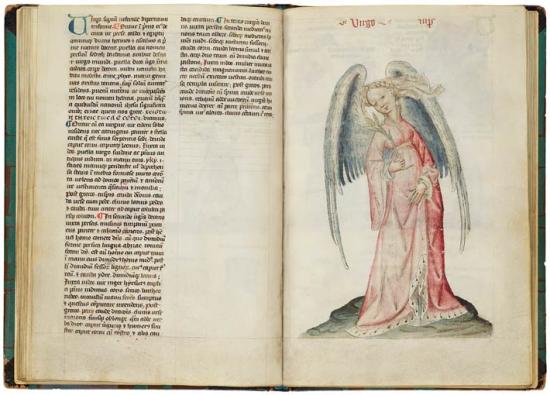
Astrological Treatises, in Latin
Purchased, 1935
In this astrological treatise, the zodiacal sign of Virgo (the Virgin) is represented by an extremely well-dressed maiden. She wears a trailing pink houpeland with bombard sleeves. The houpeland's skirt is luxuriously lined and hemmed with ermine, while its collar is lined with a second, tan fur. At her wrists we can see the sleeves of her symbolically pure-white cote hardy. As was the style, Virgo wears her belt very high, just beneath the bosom, over a gently swelling stomach. Her braided hair is uncovered; a simple transparent veil wafts from the back of her head.
Luxury in a Time of Madness
In 1392 King Charles VI suffered the first of forty-four bouts of madness that would cripple his reign. During a lull in the Hundred Years' War, strife between France and Burgundy erupted into civil war. This domestic crisis was sparked by the 1407 assassination of Charles's brother by Duke John of Burgundy. In 1419 the duke, in turn, was murdered by supporters of the crown. During these tumultuous times, fashion reached unbelievable heights of luxury.
Men's and women's fashions were dominated by a new garment, the houpeland. Men's houpelands featured enormous sleeves and a skirt ranging from full length to crotch level. The pourpoint remained popular, albeit often finely embroidered and equipped with large sleeves. Accessories included fancy baldricks (sashes) and belts—both sometimes hung with bells. Tall bonnets or chaperons, often tied into imaginative shapes, completed the look.
Women's houpelands were always full length, with bombard or straight sleeves. The simpler cote hardy, with its voluminous skirt and tight upper body, continued to be worn. Women began to wear their hair in temples, a double-horned coif surmounted by veils or a tubular burlet.
